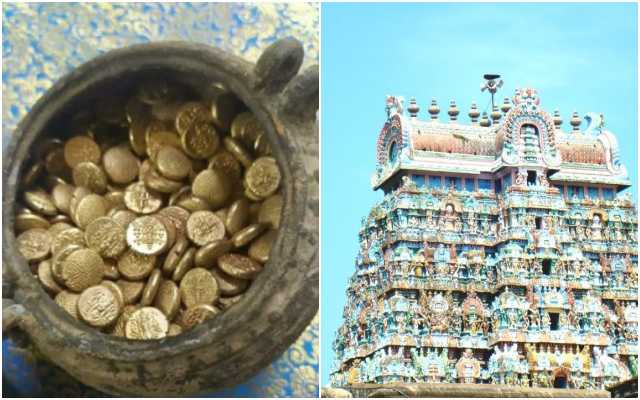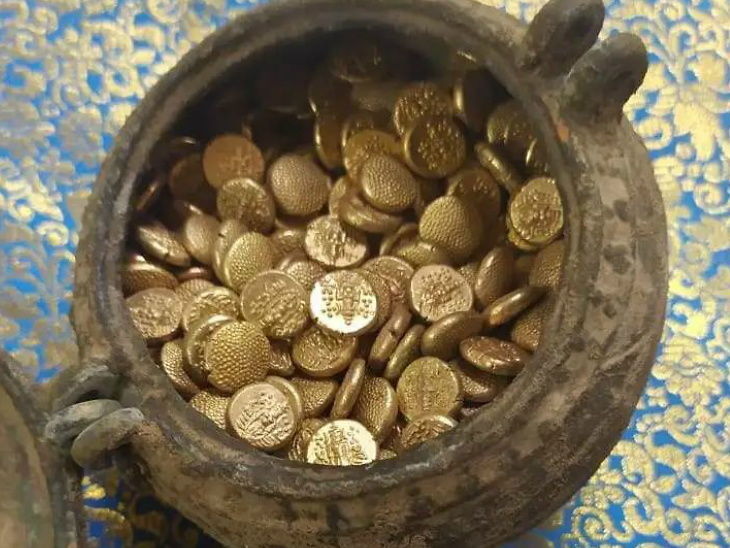Gold Coin Cache Discovered during renovation work at Jambukeswarar Temple in India

In Thiruvanaikovil, Tamil Nadu, the Jambukeswarar temple struck gold when 505 gold coins in the sealed vessel were discovered during digging.
The coins, according to officials, were in a sealed jar, which the workers found in the Akhilandeshwari shrine.
When the officials of the temple opened, 505 gold coins were found. To order to grasp their era and history, the coins will still be studied by the archeologists. The pot has been located almost 7 feet tall, according to sources.

A numismatist from the city who possesses two similar coins said those found in the temple were minted by the East India Company in the late 16th century.
On Wednesday, during clean-up work at the Arulmigu Akilandeswari Samedha Jambukeswarar temple, a closed vessel was found on an empty plot near Thayar Sanathi.
It contained 505 ancient gold coins weighing 1.716 kg. There were 504 similar coins weighing more than 3 gm and a large one weighing over 10 gm.
Following the discovery, all the coins have been kept in the government treasury in the district.

A Manoaharan, numismatist and former Railways employee from Tiruchy, told TNIE the coins date back to 1691 and minted by the East India Company.
He said, “The coin was called Pagoda’ (‘Varagan’ in Tamil). In the period, East India Company minted two types of coins, namely the single-deity Pagoda (Oru Swamy Pagoda) and triple-deity Pagoda (Moonu Swamy Pagoda). Though other coins were there for use, the Pagoda coins were specially minted for gifting purposes.”
Single-deity Pagoda would have Tirupati Balaji on one side and granules (rough surface) on the flip side. Triple-deity Pagoda would have Tirupati Balaji along with Sridevi and Bhoodevi and granules on the other side.
He added the coins found in Jambukeswarar temple must have been hidden by people back in the 16th century. He said the single 10-gm coin could be from the Arcot Nawab.
He said these coins are extremely rare and their value would be five times the current gold price for each coin.
He requested the government to preserve the coins by keeping them in a museum considering their history.





